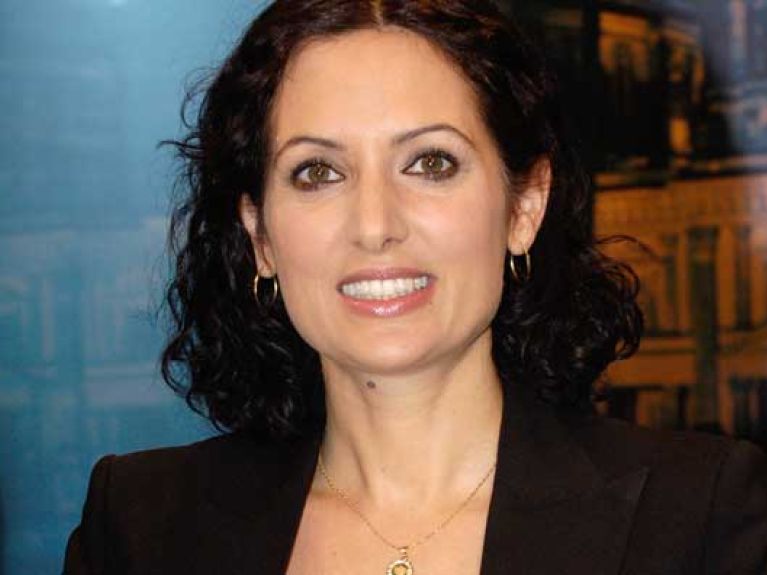The long path to a “new German identity”
Germany was late in accepting its role as an immigration country, writes Naika Foroutan. Today, diversity is perfectly normal.

Approximately 437,000 immigrants came to Germany in 2013 – the highest number for 20 years. Today, 16 million people with a so-called migration background live here. That is 20% of the population. Roughly 9 million of them have German citizenship.
The numbers speak for themselves: Germany is an immigration country. That has been the case for some time, although the politicians denied it until the beginning of the 2000s – despite the fact that until the official end of recruitment abroad in 1973 roughly 14 million people had come to Germany to work. The first reference to Germany as an immigration country finally appeared in a statement of government policy by the SPD and Alliance 90/The Greens coalition in 1999.
Before that became possible, Germany went through a number of different phases. Recruitment, migration and the economic integration of the people involved characterised the time of the first guestworkers. It began in 1955 with the recruitment agreement between Germany and Italy, which was followed by treaties with Spain, Greece, Turkey, Portugal, Tunisia, Morocco and the former Yugoslavia, and continued roughly until the end of the 1960s. The following years were strongly marked by the oil crises of 1973 and 1979/80 and the end of labour recruitment abroad. This period saw the beginning of German “foreigners’ policy”, which was motivated by the realisation that many of the “guestworkers” had moved the centres of their lives to Germany and would not be returning to their countries of origin. The 1980s were influenced by the beginnings of an integration policy. The foundation for this was the 1979 Kühn Memorandum, which was presented by Heinz Kühn, the first Federal Government Commissioner for Foreigners, and outlined ideas on the education and the political participation of migrants. Also typical of the 1980s was the idea of multiculturalism as the peaceful coexistence of different cultural and ethnic groups, whereby the emphasis lay on coexistence as “living side by side”.
After the fall of the Wall, this – rather slow – trend towards integration suffered serious setbacks. Racially motivated attacks, such as those in Hoyerswerda, Solingen and Rostock, and the massive restriction of immigration from 1993 onwards presented the picture of a country that was deeply occupied with its own reunification and finding its collective identity – in part, at the expense of an imagined “other”. Migrants remember that period as one of strong xenophobia. As the second generation of immigrants reached adulthood and solidarity increased from political and civil society representatives without migrant backgrounds, the opportunities also grew for actively shaping immigration policy. At the same time, discussion took place on the question of what is actually “German” – for example, as part of the debate on Leitkultur, a predominant or leading culture. Even during this phase, Germany did not regard itself emotionally as an immigration country – even if this status had already been politically formulated.
The year 2006 was a turning point. The World Cup in Germany gave rise to a new image: Germany as a place of welcome with a population that took every effort to be perceived differently from in the past. This reorientation was politically supported by the first German Islamic Conference (DIK) and the first Integration Summit at the Federal Chancellery. The success of the generally disparaging book “Deutschland schafft sich ab” (Germany Is Doing Away With Itself) therefore seemed all the more surprising. Published in 2010 by Thilo Sarrazin, the former Finance Senator of Berlin, it seemed to come from another era, suggesting as it did the exclusion of Islam, the country’s largest religious minority, from what it means to be German. In hindsight, this controversy is part of a series of debates about national identity and belonging that were conducted in other European immigration countries at that time. France, the United Kingdom and the Netherlands all experienced arguments about their “identité nationale” or “national identity” towards the end of the 2000s.
In May 2014, nearly 60 years after the first recruitment agreement, Federal President Joachim Gauck sent out a very clear message in a speech on the 65th anniversary of the Basic Law: “In future it will be far less possible to identify who is German by their name or appearance than it was in the past,” said Gauck, who finally gave the country a leitmotif in its search for national identity. The homogeneous core society was finally superseded. The Federal President described the current national narrative, the “new German identity”, as “unity of the different” and thereby referred – consciously or unconsciously – to Theodor W. Adorno’s wish to be able to “be different without fear”. In addition, as a result of his speech, Gauck moved Germany close to Canada, which has set the global standard since it proclaimed the solution “Unity in Diversity” for itself.
Today, we can say that Germany has not only become an immigration country – according to one OECD report of 2014, even the second most popular immigration country after the USA – but even more than that: it is now a migration society. Migration, whether emigration or immigration, has long since become a normal part of everyday life in globalised Germany. Above all, its cities are becoming increasingly heterogeneous. In Frankfurt am Main, for example, more than three-quarters of the children under six years of age have a migration background. Let us simply call these children “new Germans”. ▪
Dr. Naika Foroutan is Vice Director of the Institute for Empirical Research on Integration and Migration (BIM) at Humboldt University, Berlin.

